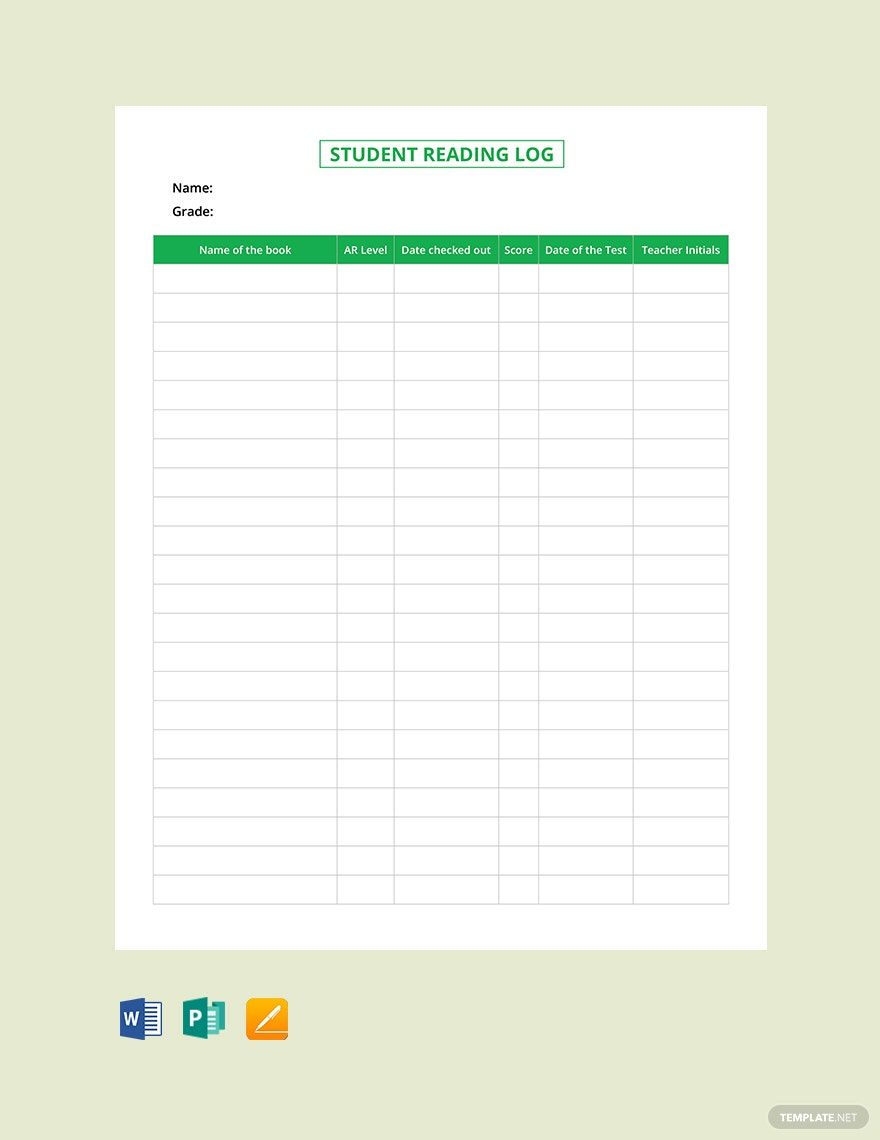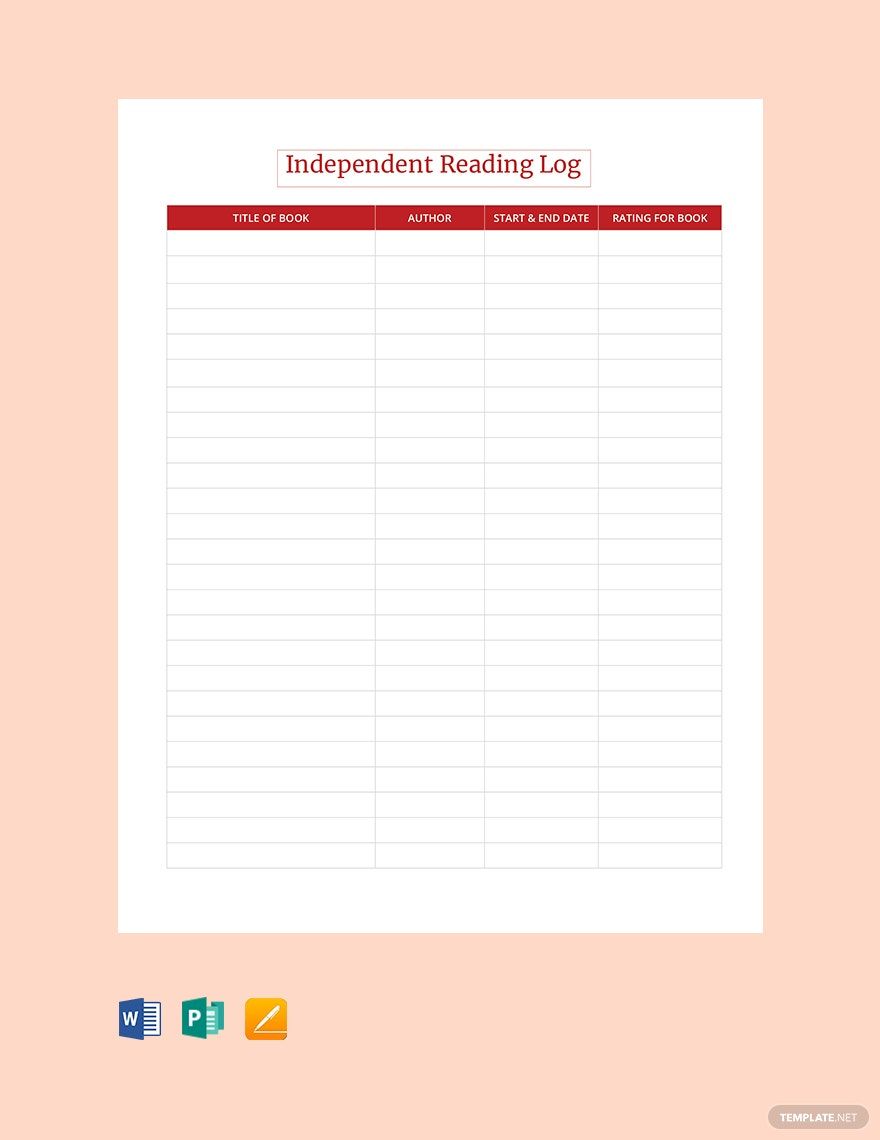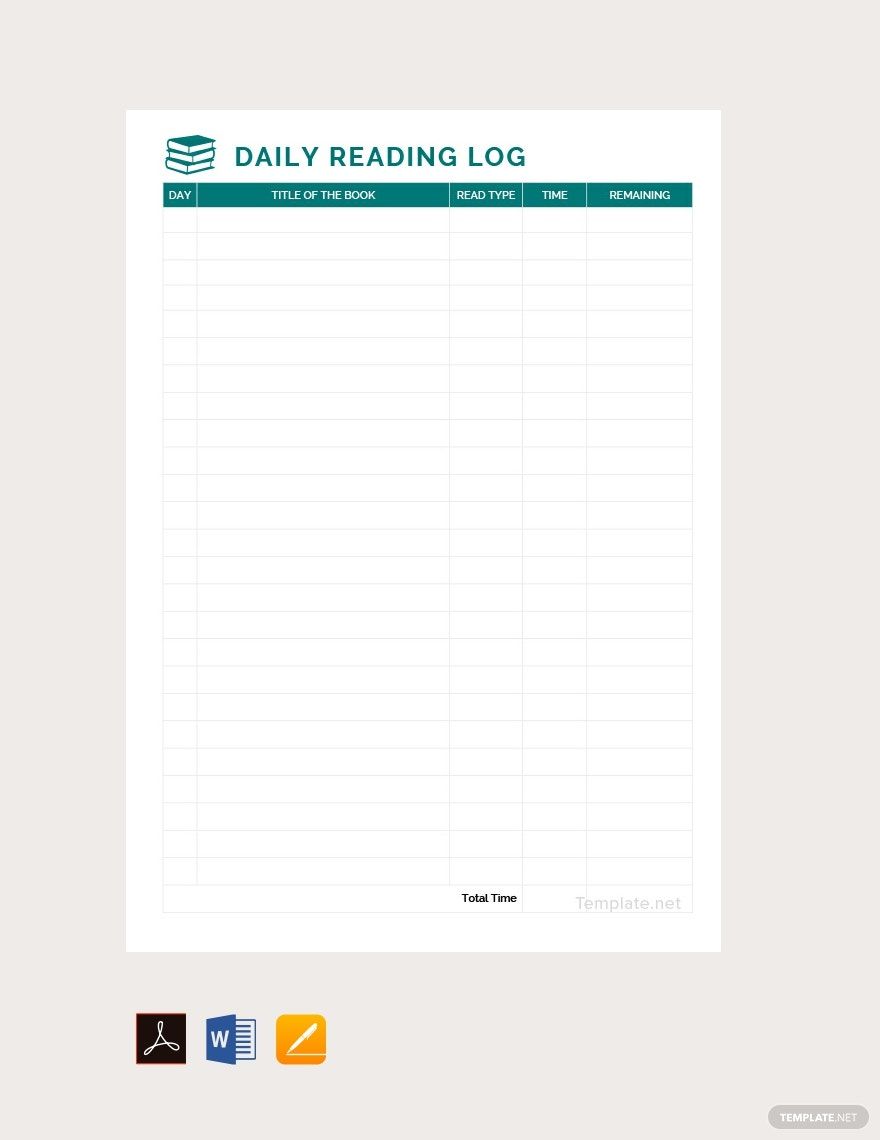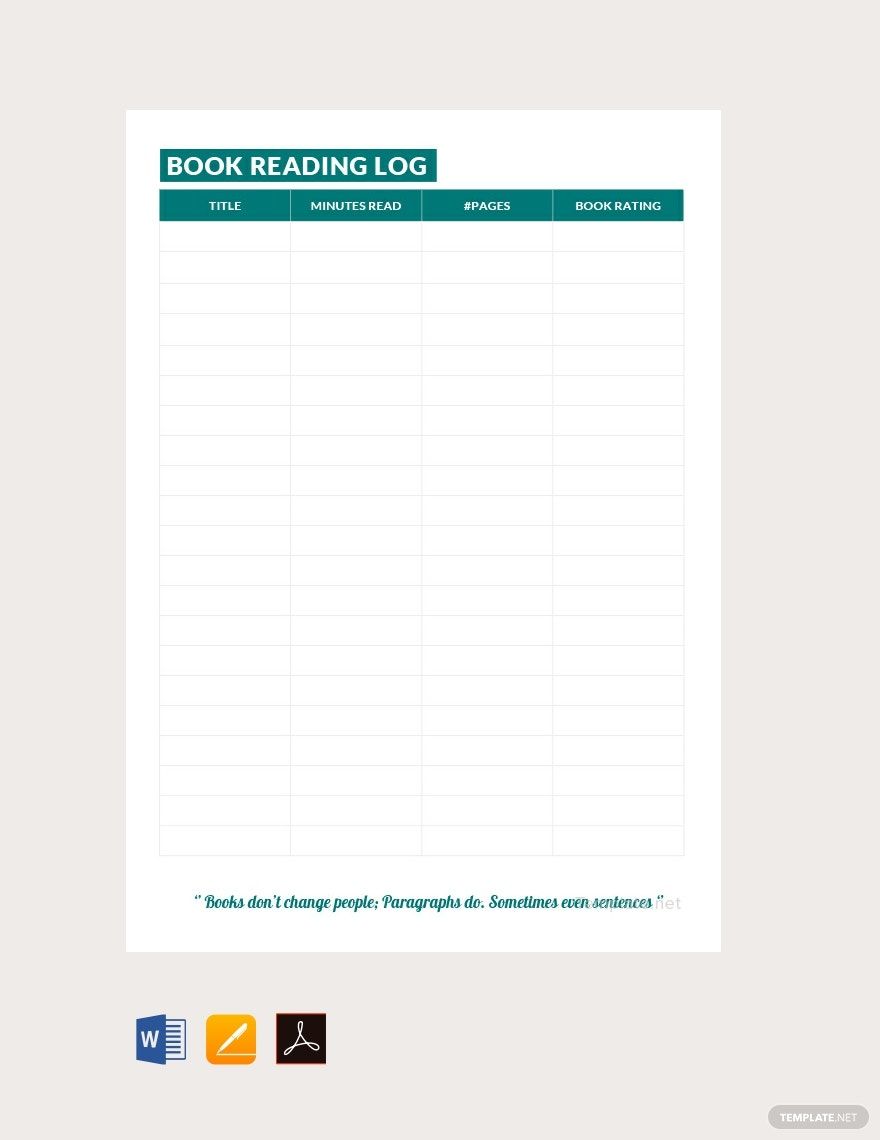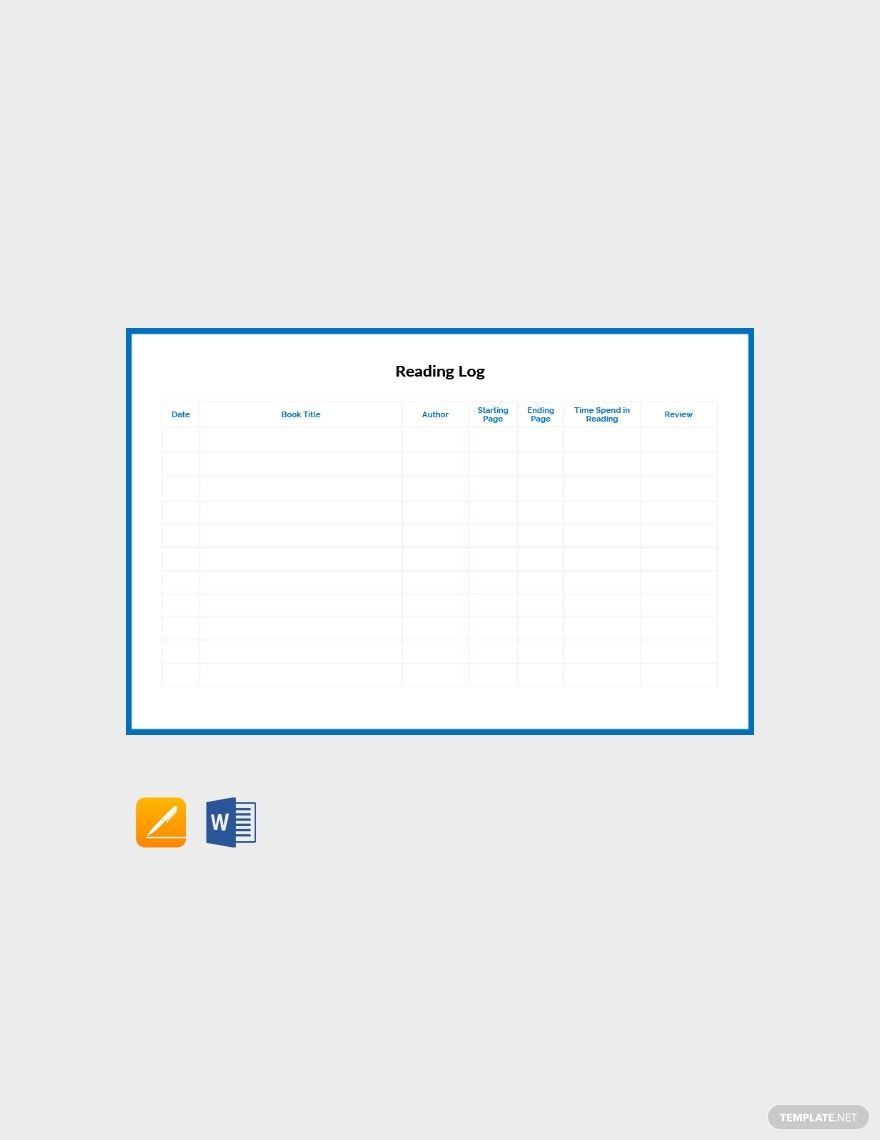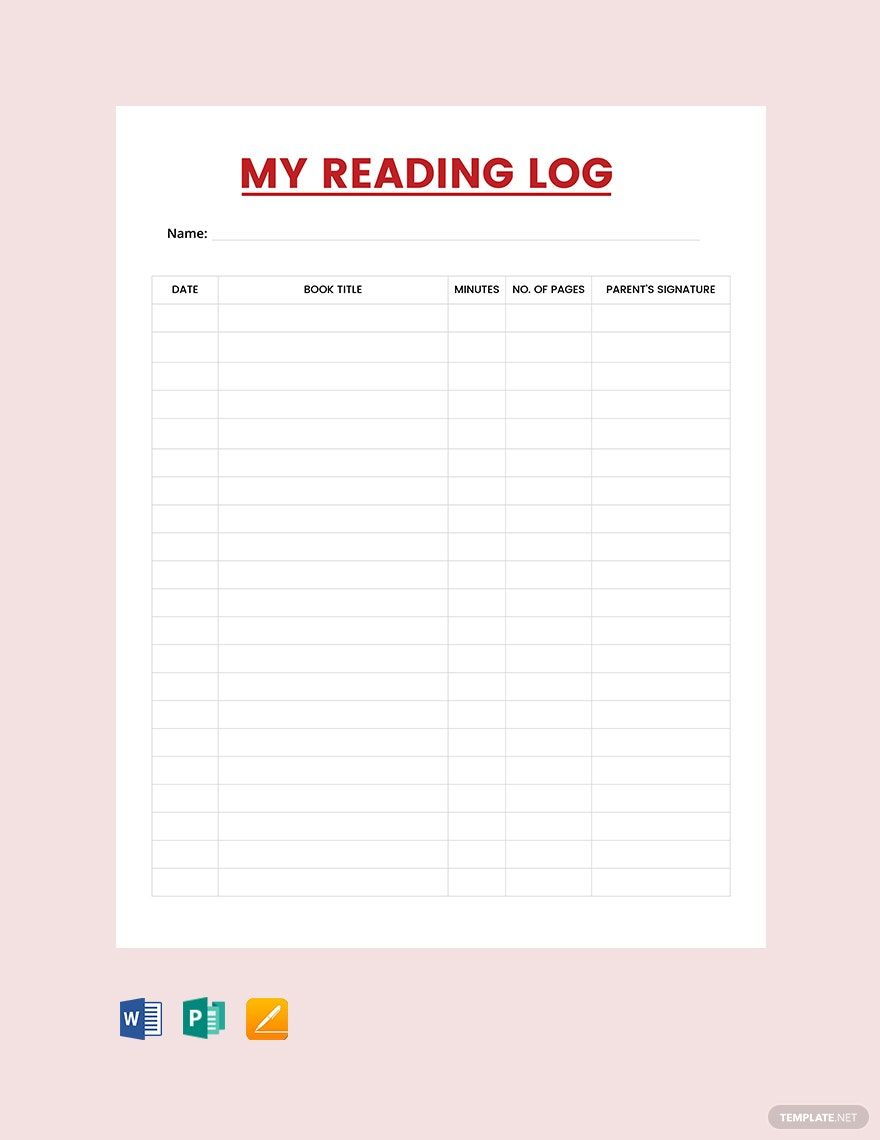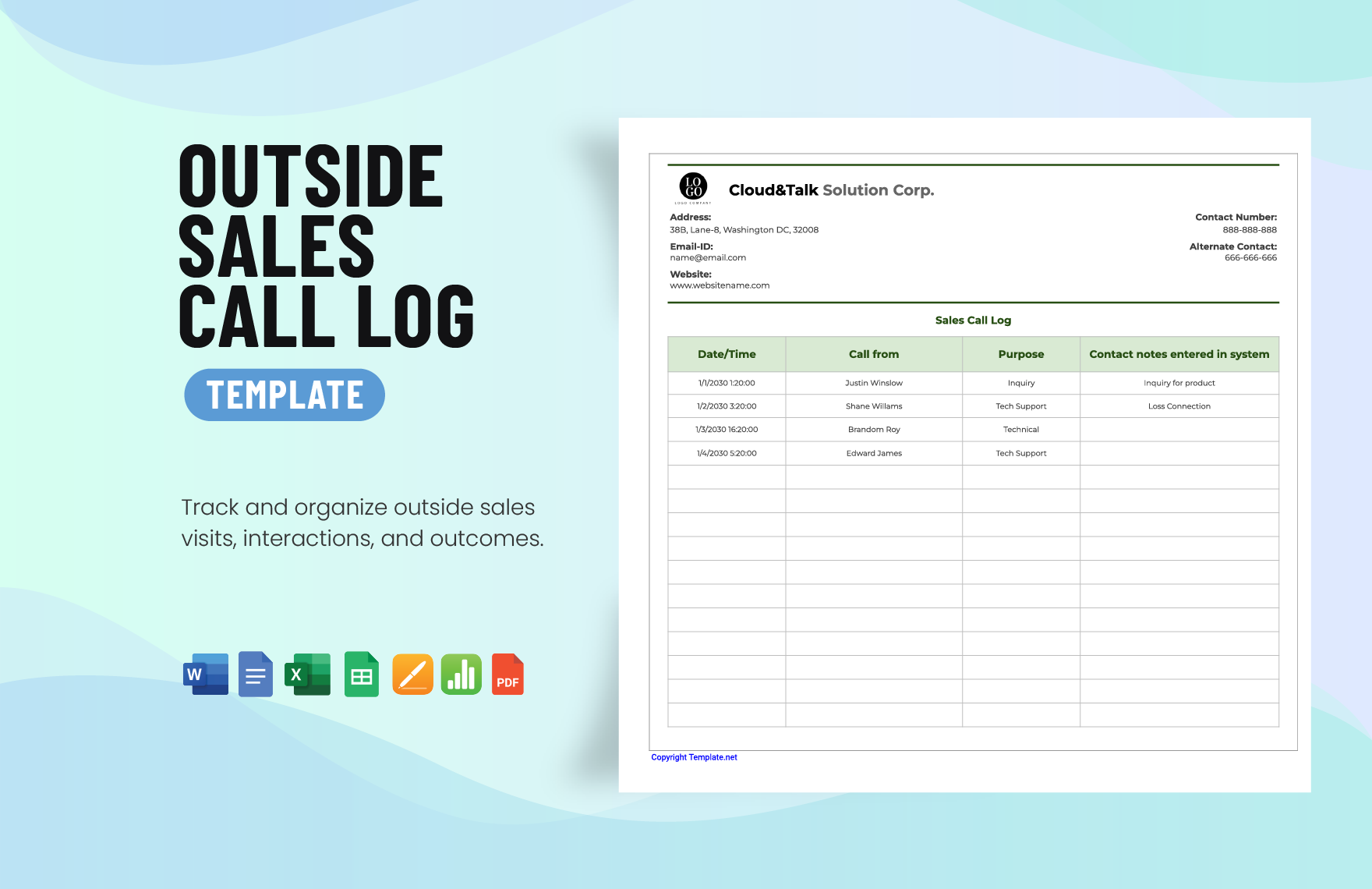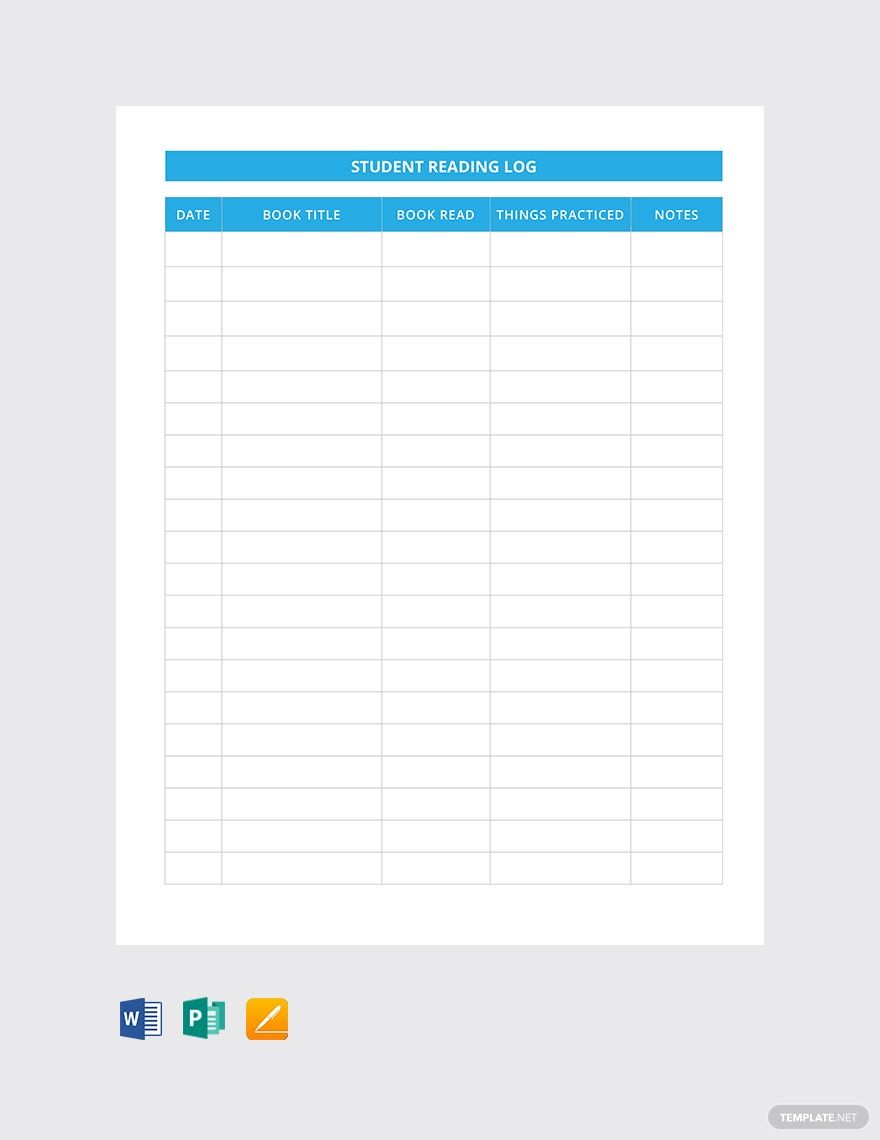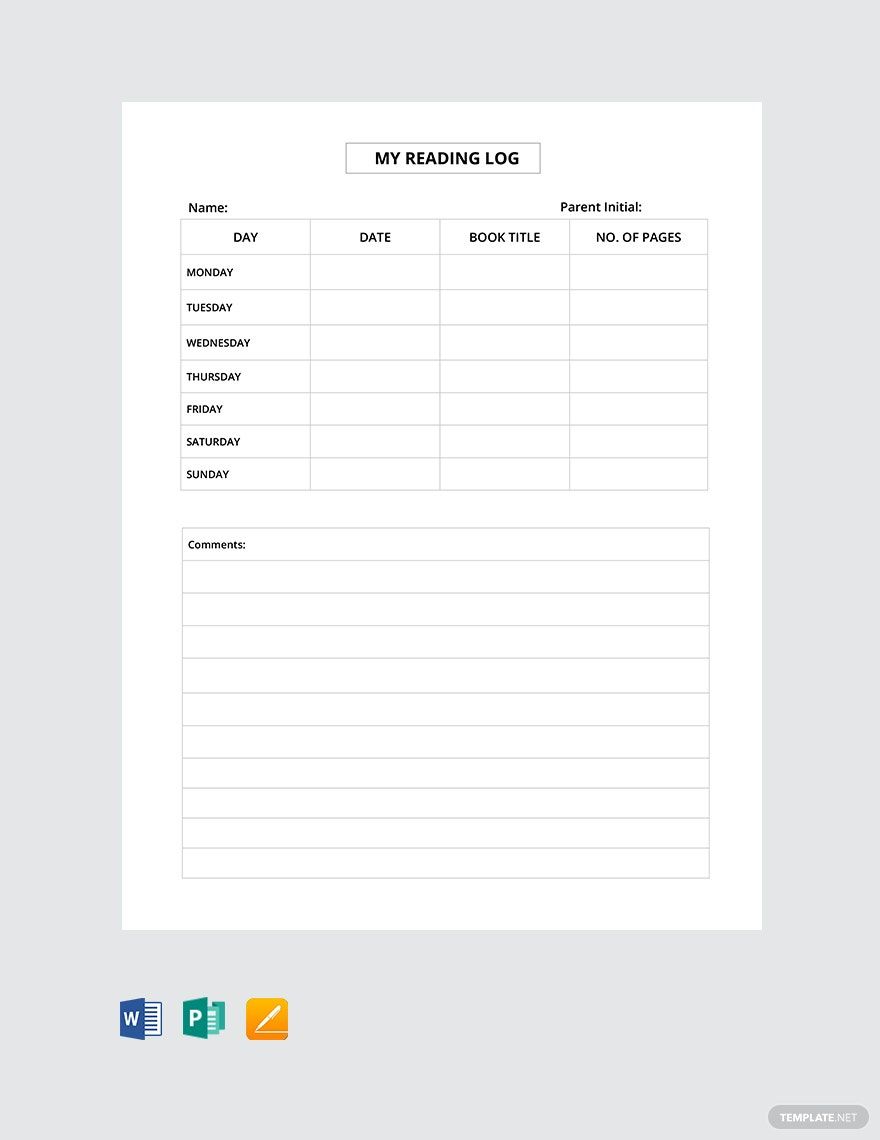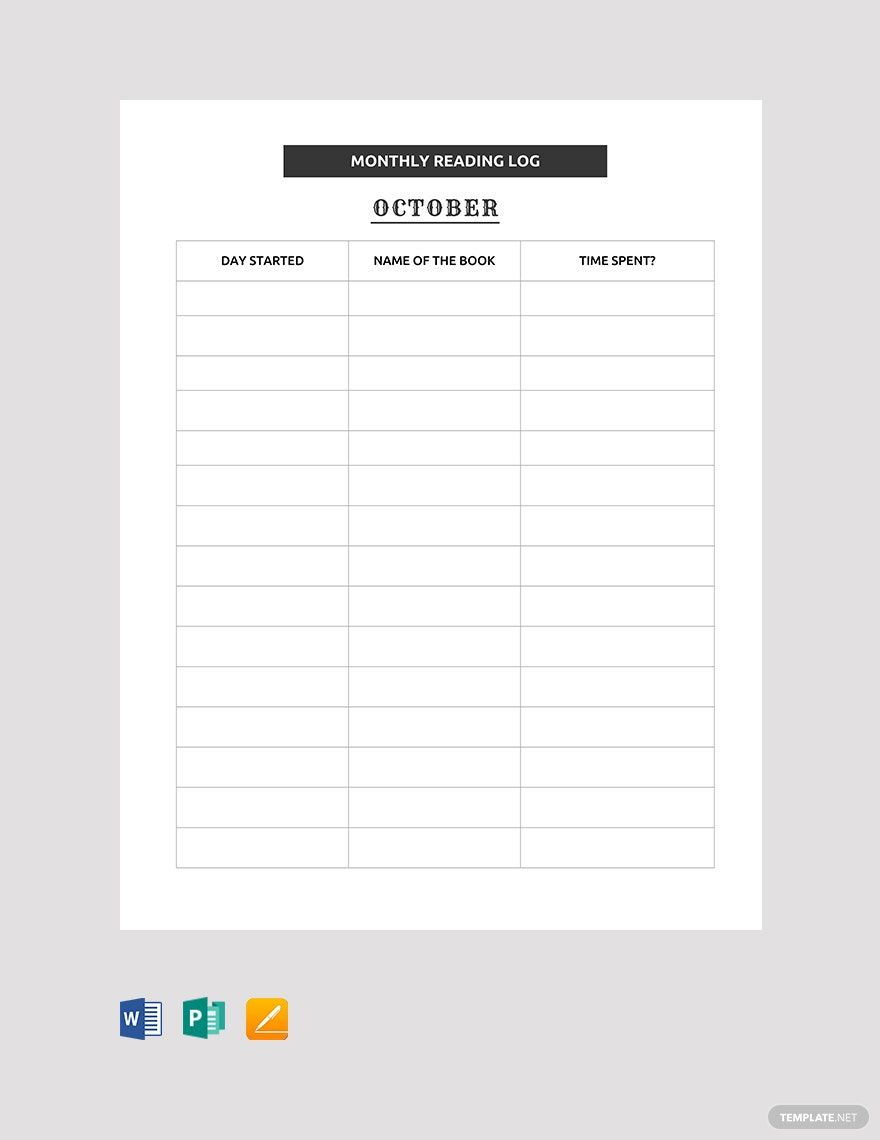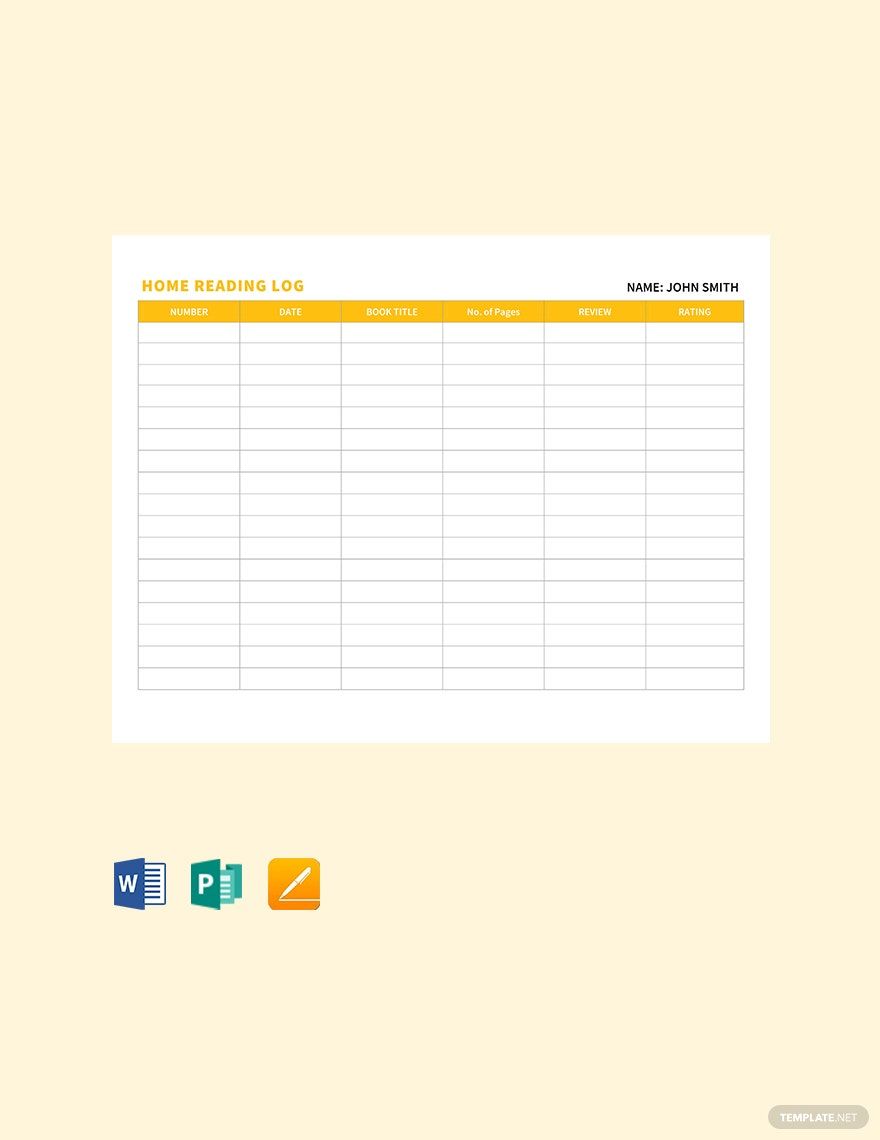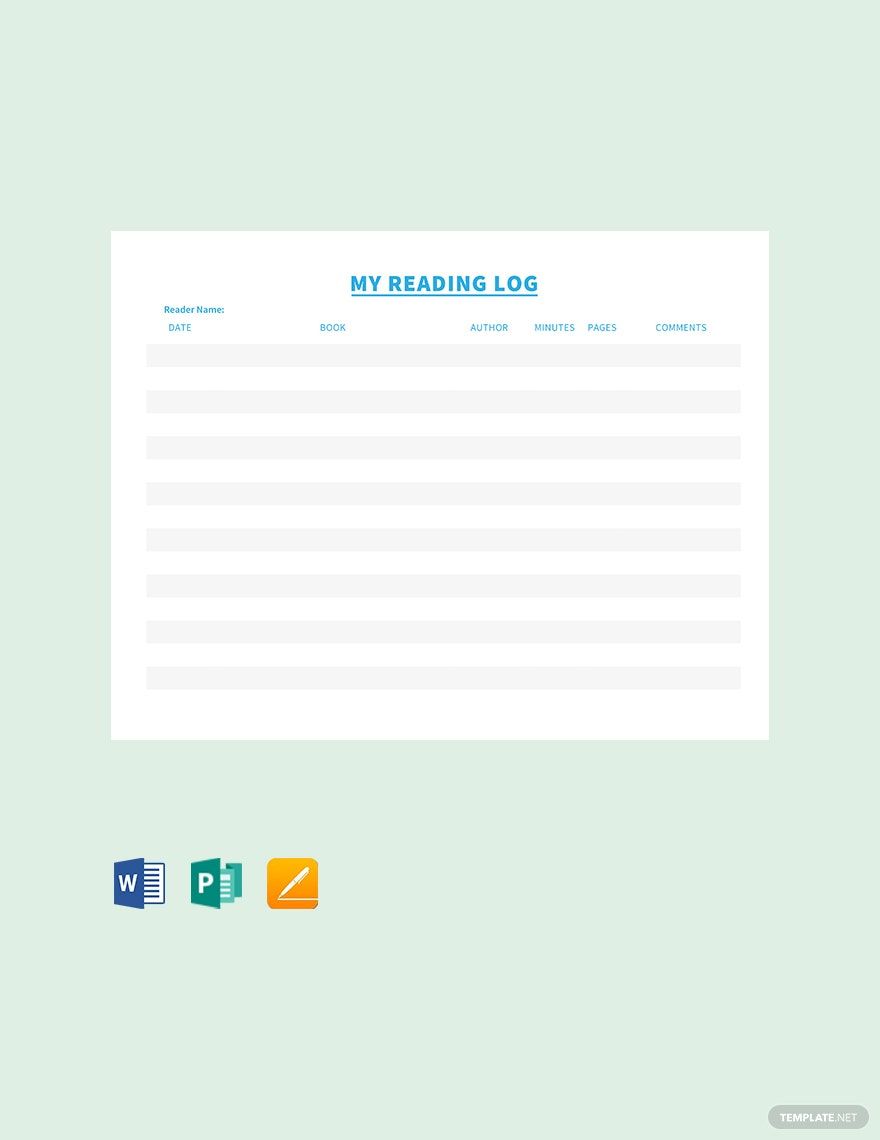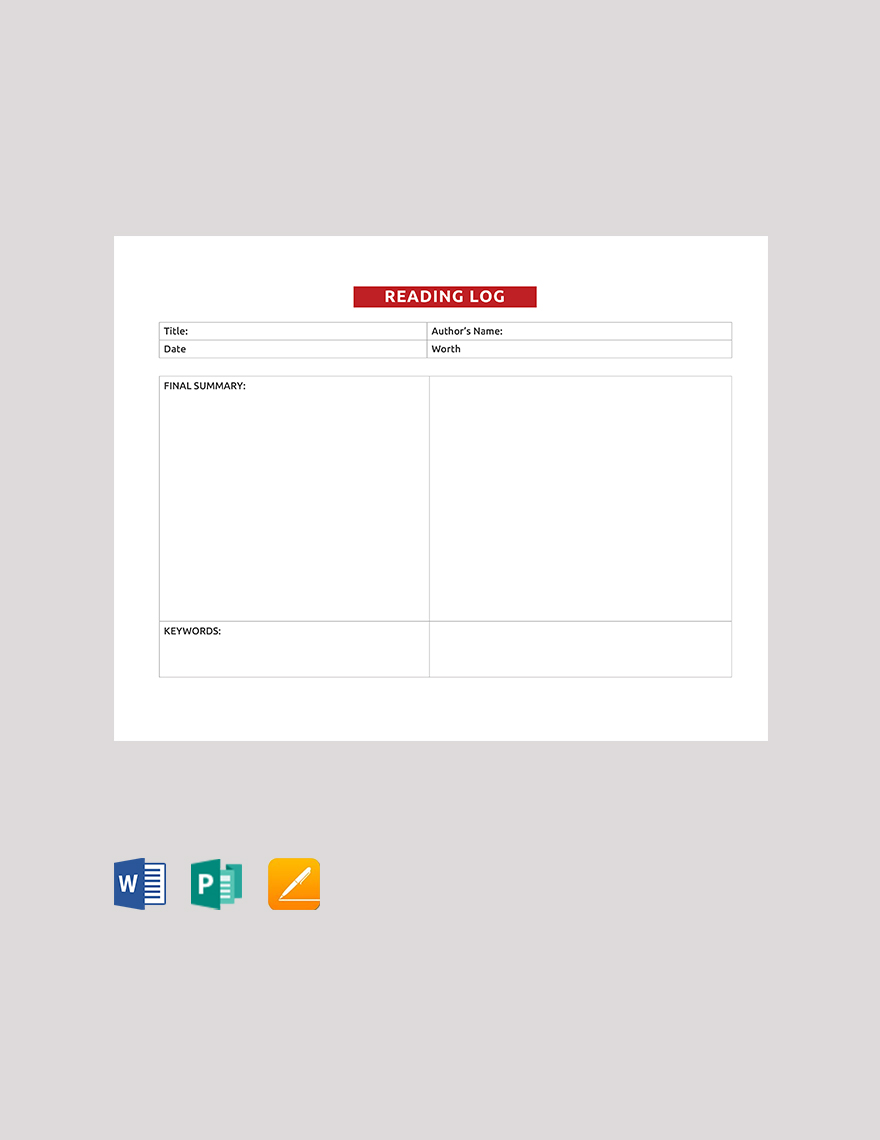Open worlds and perspectives by reading a book either it is the classic paper edition or the digital one. Keep track and create an inventory of the books that you read. Have that daily, weekly, or monthly bibliophile's schedule, or make that log for your reading teacher about the progress you made! It does not matter if you are in elementary, middle school, college, or already part of the workforce. Our reading log sheets can help you record your reading progress. Our ready-made and professionally designed sample templates are easy to use and quick to download. We care for your reading; that is why we have it prepared for you. They are printable if you are in a rush and customizable for your creative touches. Avail our reading log sheet now!
Reading Log Sheet Templates in Apple Pages
Get creative (and organized) with customized reading log sheet templates in Apple Pages. Professional quality and free to download. Start now!
